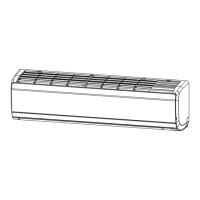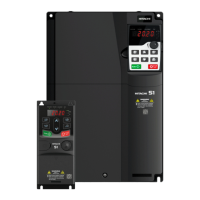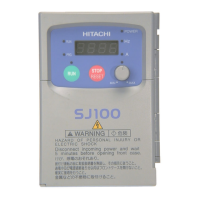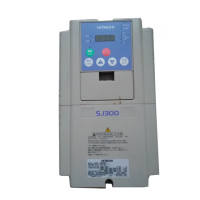Wire Connection and Optional Devices
Serial communication
(Wiring example)
STO terminal
・For the terminal function, see "21.4 STO Terminal
Function".
* The section above describes only the function of
STO terminal. If certification of function safety is
needed, see the SJ-P1 Safety Function Guide
separately provided.
・SP and SN terminals with the same names are
internally connected respectively, so they can be
used for wiring multiple terminals.
・When using Modbus communication, see "Chapter
14 RS485 Communication".
characteristics
RS485 communication
SP
SN
RP
(CM1)
RS-485 terminal
for Modbus
communication
SP terminal: RS-485 differential (+) signal
SN terminal: RS-485 differential (-) signal
RP terminal: Connect to SP via the terminating
resistor
CM1 terminal: Connect with the signal ground of
an external communication device.
(also used by FM terminal)
There are are two SP terminals and SN terminals
each, which are connected internally.
Maximum baud rate is 115.2kbps.
Equipped with
terminating resistor
(120Ω)
Enable: Short RP-SN
Disable: Open RP-SN
Terminal
symbol
Terminal name
P24S 24V output power terminal
CMS
Common terminal for STO
terminal
STC Logic switching terminal
ST1 STO input 1
ST2 STO input 2
ED+ Monitoring output terminal
ED- Monitoring output common
When enabling the terminating
resistor, short RP-SN.
Control circuit terminal area
ED-
STO confirmation
terminal
STO terminal
P24S
(+) (-)
Control circuit terminal area
Connect CM1 to the SG
(signal ground) of an
external device.

